Most of the 1.5 million children that die each year as a result of unsafe water live in South Asia. While the situation is dire, it is not hopeless and could pave the way for better cooperation.
On February 10, 2013, in India over 30 million people took a dip in the Ganges river and drank its water to mark Kumbh Mela, a sacred festival in the Hindu calendar. But experts have said that the waters there are unfit for bathing or drinking.
Nearly 1,000 children die every day in India due to diarrheal diseases. This is tragic and an unacceptable reflection of the dire state of access to clean water and poor sanitation.
India ranks 120 out of 122 countries in the world for the quality of water available to its citizens. A staggering 456,000 people die every year in India from water related diseases. Recent test show that the Ganges, one of India's most revered rivers, contains 60,000 fecal coliform bacteria per 100ml, 120 times above the figure considered safe for bathing. The presence of fecal coliform indicates that the water has been contaminated with the fecal material of humans or other animals. Downstream, where thousands use the river to bathe and as a primary source for drinking water, the concentration is 3,000 times the safe limit.
The reality is that the entire South Asian neighborhood has highly polluted waters caused by the unchecked release of effluents from agriculture, domestic sewage and industry. This has resulted in numerous diseases and chronic illnesses among the region's most vulnerable. Drinking water with high fecal coliform bacteria can lead to typhoid, dysentery, cholera, viral and bacterial gastroenteritis, as well as polio.
In Bangladesh, 68,000 people die each year from waterborne diseases. Surrounding rivers in Bangladesh's capital Dhaka are polluted with 1.5 million cubic meters of untreated sewage and effluents every day. In Pakistan, there are more than 100,000 deaths annually due to waterborne diseases. National reports found that none of the water samples taken from Pakistan's 23 major cities was safe to drink.
While the situation is bad, it is also not without hope. India (alongside China) is considered the most improved nation with regard to creating access to safe drinking water, one of the Millennium Development Goals of 2015.
But at the same time, sanitation is a crucial consideration, though often fails to attract the same attention. Poor sanitation has a compounding effect on the availability of clean water, causing gastrointestinal diseases that can be fatal. The International Federation of Red Cross and Red Crescent Societies recently made a significant call on governments, donors, and communities to get the balance right and ensure sanitation gets the funding and support it needs.
While countries in South Asia are showing improvements in access to clean water, many still lag behind in sanitation. In 2010, 81 percent of Bangladesh's population was considered to have access to improved water resources, while only 56 percent had access to improved sanitation facilities.
The lessons learned in providing better access to safe water must be adapted to the provision of good sanitation. Millions of lives will be saved, and millions more will be improved. For example, cheap, locally produced and easy-to-use arsenic testing kits are available in Bangladesh, and these could be exported to neighboring India and Nepal. Simple filters in use across India and Bangladesh could also be taken across borders. And it is vital to raise awareness about existing sanitation facilities, many of which are underused.
Community-led social mobilization programs that create awareness of good hygiene for the poor and those with no access to education have been successful in rural villages in India and Bangladesh. These can be scaled up throughout the region by translating documents and training materials into local languages.
It is also important to promote organic produce and educate farmers about prudent use of chemical fertilizers and pesticides. The South Asian Association for Regional Co-operation (SAARC) can be used as a forum to negotiate a greater market for products grown without the side-effect of polluting vital water sources.
South Asia's countries not only share water resources -- rivers do not respect national boundaries -- they also share the issues responsible for killing millions every year. Like the efforts being made to eradicate polio, there are economic, ecological and developmental incentives for South Asian nations to address the threat of poor water and sanitation.
With rapidly melting Himalayan glaciers, an emerging threat of water scarcity in South Asia looms. Without intervention -- locally, nationally, internationally -- this will only get worse in coming decades, increasing instability, driving migration, raising regional tensions and adversely impacting the health of its populations.
Improving access to safe water and adequate sanitation will save millions of lives, but it requires effective action and effective cooperation. In a region known for its instability, perhaps working collectively, sharing knowledge, ideas and experiences to tackle this well-understood and solvable problem may be the best way forward. Such efforts may not just promote good will and save lives, but could also serve as a bridge to peace.
Dr. Poonam Khetrapal Singh is the Deputy Regional Director in the South East Asian Regional Office of WHO and Siddharth Chatterjee is the Chief Diplomat and Head of Strategic Partnerships at the IFRC HQ. Follow Siddharth Chatterjee on twitter: @sidchat1